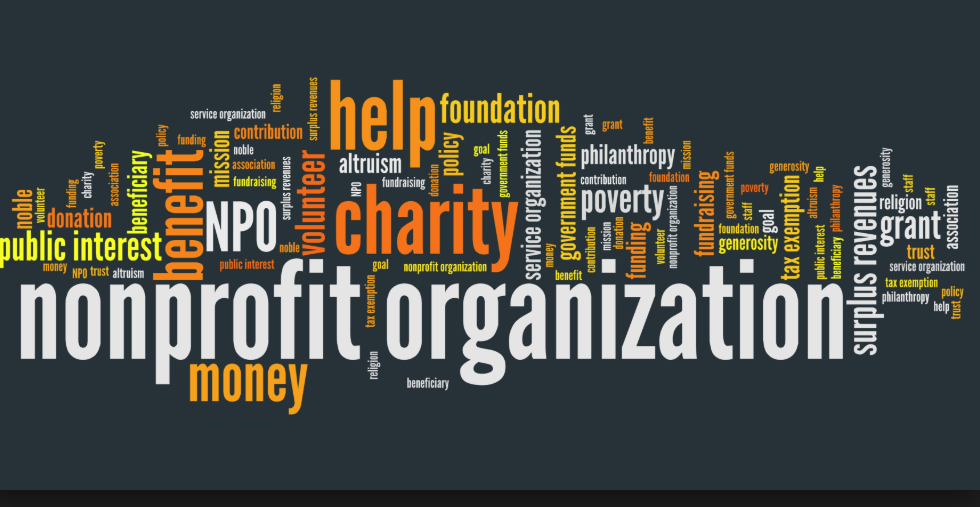Leading Nonprofit Agency: Helping Charities and Organizations Achieve Their Objectives
Leading Nonprofit Agency: Helping Charities and Organizations Achieve Their Objectives
Blog Article
Assessing the Difficulties and Opportunities Faced by a Nonprofit Company in Getting Its Objective and Goals in Today's Culture
In the current landscape, nonprofit agencies are navigating a complex selection of obstacles, such as changing funding sources and enhanced competition for donor involvement. By checking out just how nonprofits can tactically adapt to these dynamics, we can reveal not only the approaches they use to get rid of challenges but also the untapped possibility that exists within their operational frameworks.
Current Landscape for Nonprofits
The current landscape for nonprofits is identified by an intricate interaction of progressing funding models, heightened competitors for donor focus, and raising needs for responsibility and openness. Nonprofit organizations are progressively diversifying their revenue streams to consist of gives, private donations, corporate sponsorships, and social venture efforts. This shift mirrors a critical reaction to conventional financing resources ending up being a lot more affordable and unforeseeable.
In addition, the surge of digital interaction platforms has changed how nonprofits involve with potential benefactors. Social network, crowdfunding, and on-line projects are now crucial tools for getting to wider target markets, yet they likewise intensify competitors amongst organizations trying limited resources. In this setting, nonprofits must fine-tune their messaging to properly capture the rate of interest and dedication of supporters.
In addition, stakeholders are requiring greater transparency pertaining to how funds are assigned and the quantifiable influence of not-for-profit activities. This trend necessitates that companies take on robust liability actions, consisting of comprehensive reporting and examination structures, to show their efficiency. Subsequently, the not-for-profit field is browsing a landscape that calls for cutting-edge reasoning, critical flexibility, and a dedication to moral techniques in order to prosper in the middle of these vibrant difficulties and chances.
Secret Difficulties Experienced
Navigating the nonprofit sector presents a myriad of challenges that can hinder organizational effectiveness and sustainability. One of the most pressing issues is the reliance on irregular financing sources. Nonprofits commonly depend upon grants, contributions, and federal government support, which can fluctuate significantly, bring about economic instability and problems in long-term preparation.

Staff retention and volunteer engagement position further challenges, as several nonprofits battle to offer competitive incomes and benefits. The high turnover rates can interrupt organizational continuity and affect solution distribution.
In addition, adjusting to technical improvements and digital change stays an obstacle for numerous nonprofits. An absence of sources and proficiency can prevent companies from leveraging modern technology successfully, thus limiting their outreach and performance.
Eventually, these challenges call for nonprofits to use calculated planning and cutting-edge techniques to preserve their mission and make certain sustainability in a complicated landscape. nonprofit agency.
Emerging Opportunities
How can nonprofits harness arising possibilities to enhance their impact? In today's swiftly progressing landscape, nonprofits have the possibility to leverage technical improvements, shifting social characteristics, and enhanced public understanding to further their goals. The surge of electronic platforms allows organizations to increase their reach, involving with diverse target markets and promoting neighborhood links. By making use of social media and online fundraising devices, nonprofits can enhance presence and draw in younger benefactors that are a lot more inclined to sustain causes they reverberate with.
Moreover, cooperation with organizations and other sectors is becoming much more widespread, offering nonprofits with accessibility to resources, knowledge, and cutting-edge remedies. Partnerships can enhance initiatives, drive neighborhood engagement, and develop lasting impacts. Additionally, the growing focus on company social responsibility provides nonprofits possibilities to align with companies that focus on social impact, getting financial backing and shared objectives.
The raising concentrate on data-driven you could look here decision-making makes it possible for nonprofits to much better examine their programs and results, enhancing accountability and effectiveness. By welcoming these arising chances, nonprofits can not only strengthen their functional abilities however also increase their impact in resolving pushing societal issues, ultimately driving purposeful modification in their neighborhoods.
Approaches for Adaptation
Adjusting to a constantly altering setting is necessary for nonprofits intending to sustain their effect and performance. To navigate the intricacies of modern-day society, nonprofits have to implement calculated approaches that improve their durability and responsiveness.
One trick strategy includes leveraging modern technology to streamline operations and broaden outreach. By using electronic systems, nonprofits can enhance communication with stakeholders, improve fundraising initiatives, and rise awareness of their objective. In addition, adopting data-driven decision-making methods permits companies to assess their programs' efficiency and change approaches based on empirical evidence.
Collaboration with other organizations-- both for-profit and not-for-profit-- can cultivate source sharing and technology. nonprofit agency. Collaborations can bring about common knowledge, funding opportunities, and expanded networks, inevitably intensifying the cumulative effect
Moreover, cultivating a culture of adaptability within the company is crucial. Educating team to accept modification and motivating innovative problem-solving can empower teams to react successfully to emerging challenges.
Study and Success Stories
Effective adaptation strategies in the nonprofit industry can frequently be illustrated with compelling study and success stories. One remarkable instance is the "Feeding America" network, which transformed its procedures during the COVID-19 pandemic. By leveraging modern technology and neighborhood collaborations, the company scaled its food distribution initiatives to meet the extraordinary read this demand, offering millions of family members who encountered food insecurity.
One more impactful case is the "Boys & Girls Clubs of America," which adjusted its programs to a virtual layout during lockdowns. By presenting online mentorship and appealing activities, they preserved links with youth throughout the country, making certain continued assistance and development regardless of the difficulties presented by social distancing.
Similarly, the "World Wild Animals Fund" has effectively incorporated community-based conservation methods, encouraging local populations to join wildlife security initiatives. This strategy not only promotes neighborhood possession yet also improves environmental sustainability.
These study highlight how nonprofits are not only attending to prompt obstacles yet are also creating long-lasting options that straighten with their goals. By sharing such success tales, organizations can inspire others to adapt and innovate, eventually driving positive modification within their areas.

Conclusion
To conclude, nonprofit firms today navigate an intricate landscape defined by economic instability, competition, and labor force challenges. Nonetheless, the potential for development and innovation stays significant. By accepting electronic outreach, fostering cooperations, and executing data-driven methods, these over at this website companies can enhance their functional performance and better line up with area needs. Eventually, resolving both possibilities and challenges will certainly be critical for nonprofits to satisfy their objectives and attain lasting impact in society.
In the existing landscape, not-for-profit firms are browsing an intricate selection of obstacles, such as rising and fall financing resources and boosted competitors for contributor interaction. The nonprofit sector is navigating a landscape that requires cutting-edge reasoning, calculated versatility, and a commitment to ethical techniques in order to grow among these dynamic challenges and opportunities.
Browsing the not-for-profit industry presents a myriad of obstacles that can impede organizational effectiveness and sustainability.In verdict, not-for-profit companies today navigate an intricate landscape defined by monetary instability, competition, and labor force difficulties. Ultimately, resolving both obstacles and chances will be essential for nonprofits to accomplish their objectives and achieve long-term effect in culture.
Report this page